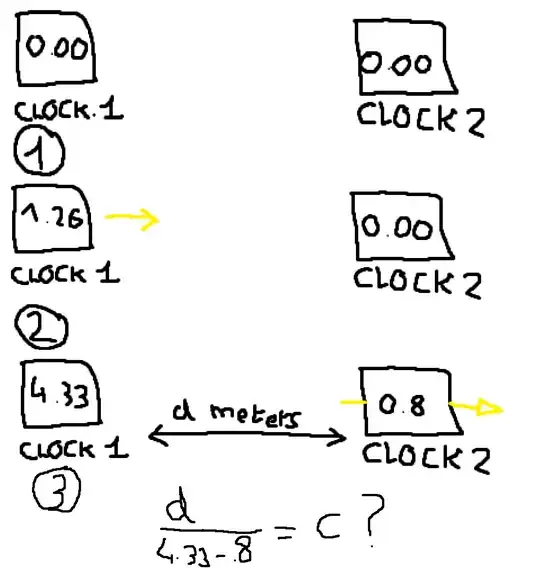I know a lot of people already asked about this, but i still can't figure out why it's impossible to measure the one-way speed of light. Sorry if it's a dumb question, but I'd really like understand.
Let's say we have to clocks, both at 0.00s, or off (so we don't need to sync them) (1).
We fire a beam of light, so the clock 1 sensor is triggered, the clock 2 is still at 0.00 (2).
The beam of light reaches the second clock and triggers it (3).
Now if we subtract, we have clock1 - clock2 = t (time for light to travel d meters), so c = d / t. Of course, this is limited by the precision of the sensors, but fundamentally, why wouldn't this work?
